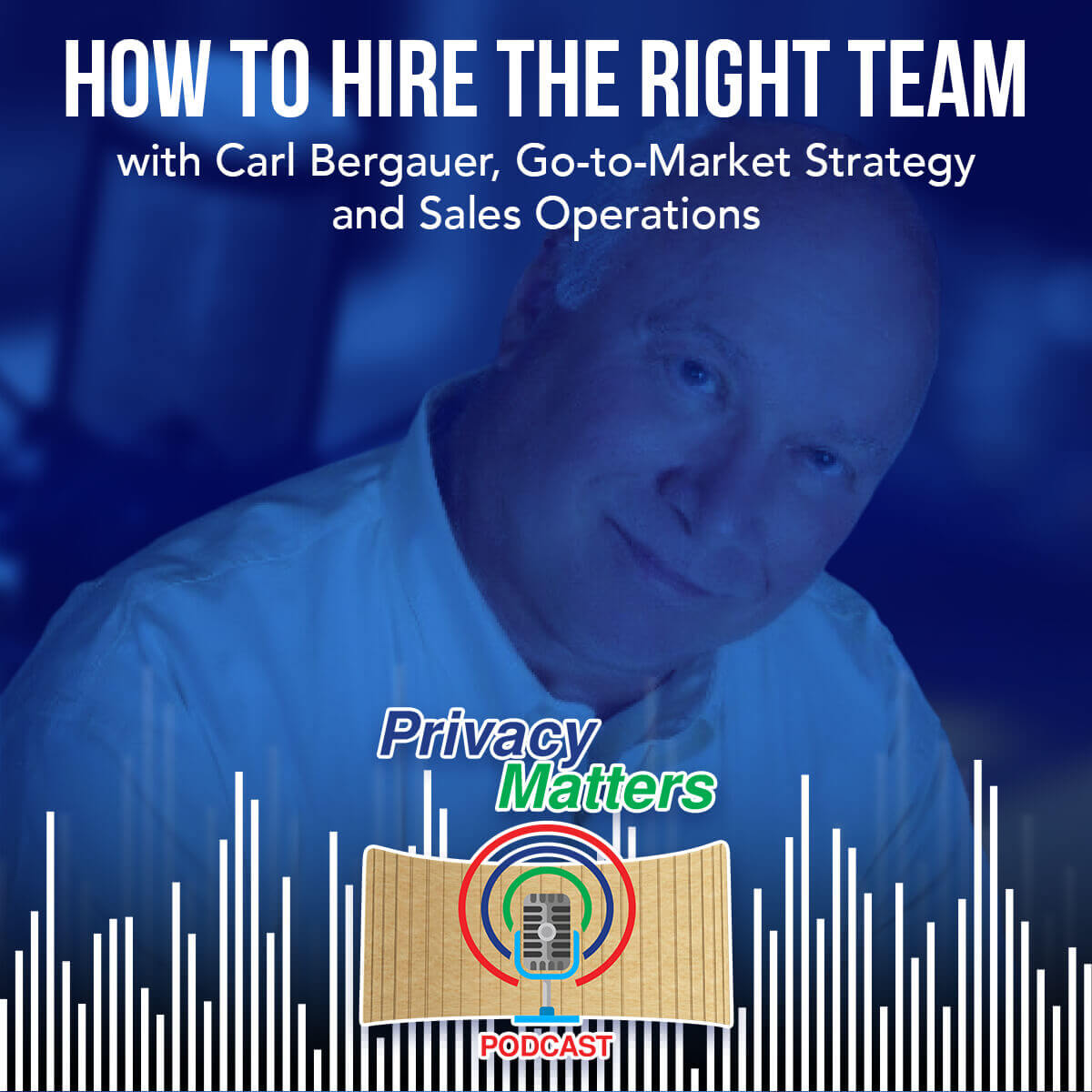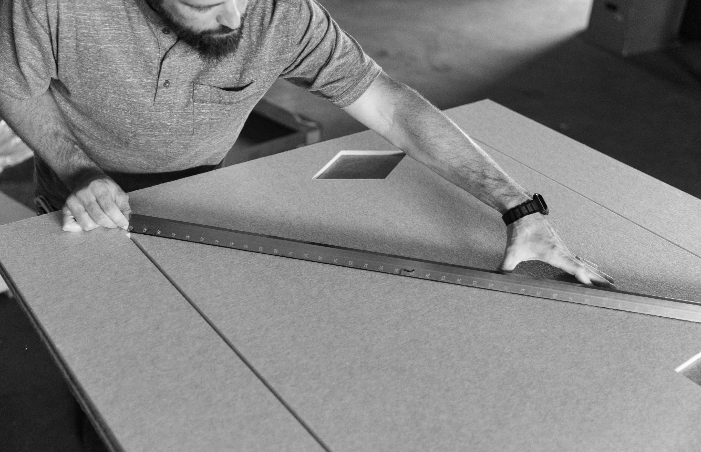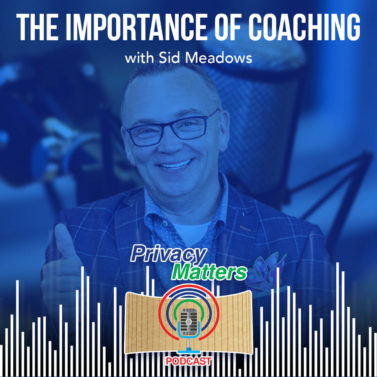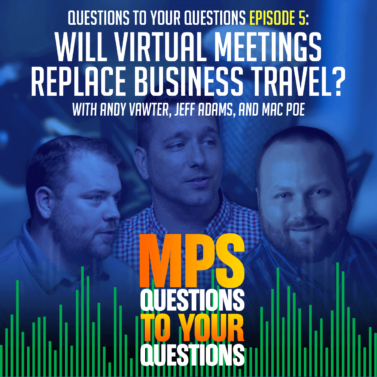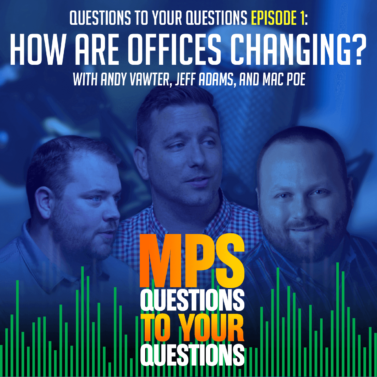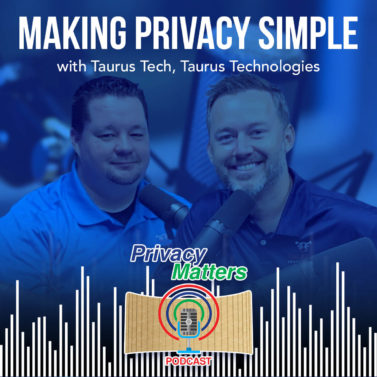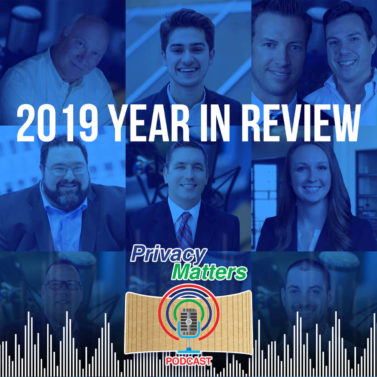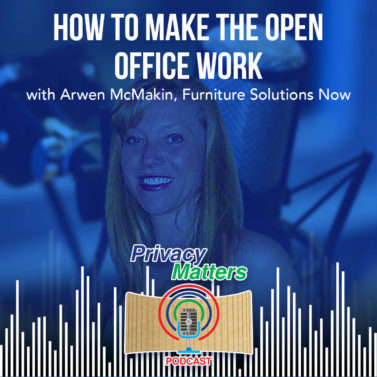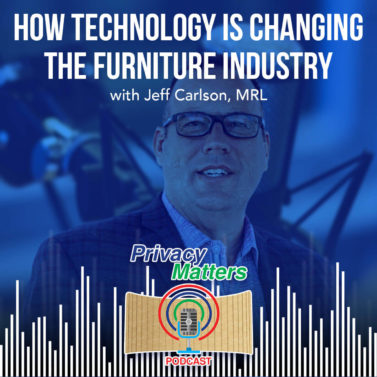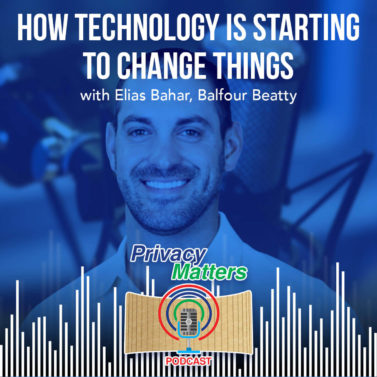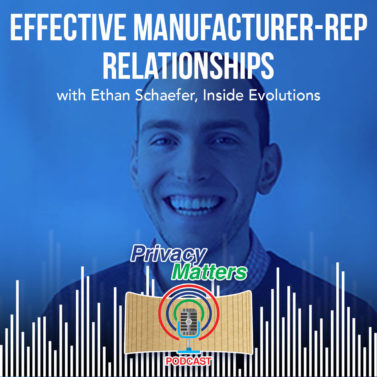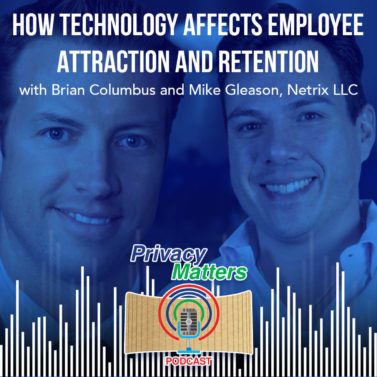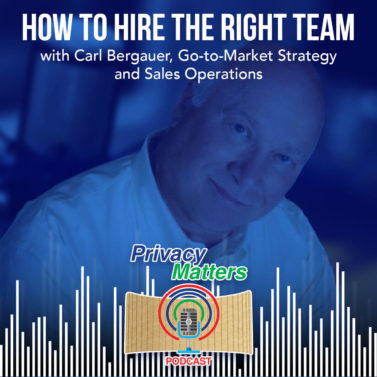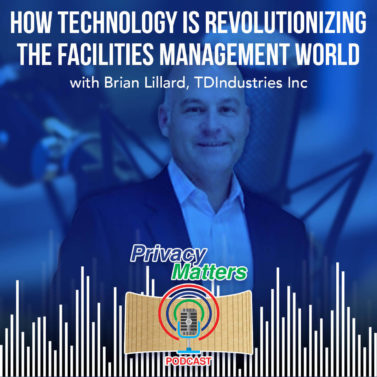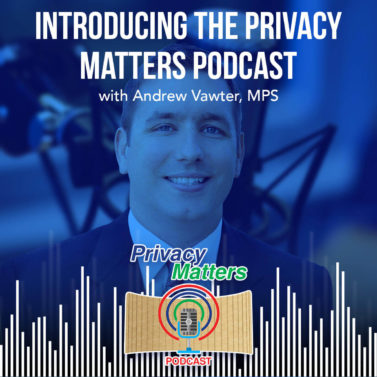Andrew: [00:05]
Welcome to this episode of Privacy Matters. I’m your host Andy Vawter.
I’m excited today for our guests because he is an icon in the contract furniture industry. His name is Carl Bergauer. This man has nearly four decades of experience in this industry from everything from selling office supplies to managing sales teams, to running operations and even president of various organizations. He worked for many dealers in town and is really plugged into the A&D community as well as he’s an active participant in ASID, IIDA, IFMA, and Cornet. He’s also one of the founders of Metricon and a former chair. I wanted to sit down with him because these days Carl is consulting with companies like ours and others to help improve their go to market strategy and their sales operations in a way that helps us better serve our customers and the industry that we sell to. Carl has a very unique perspective on a topic that I think is important to all of us and that is hiring, interviewing, and onboarding new employees.
And so today, that’s going to be the topic that we talked about. He has a fairly systematic approach that he’s developed over the years for how to recruit, how to interview and how to onboard new employees. And so we’re going to kind of dig into that today and I hope you find it valuable.
Well, thanks for being here Carl. I’m really excited to sit down and chat with you really just because your experience and your personality are pretty fun to communicate with. You’ve had so many different opportunities throughout your career to manage people, to hire them, to train them up and to let some go. And so just really getting to learn from your experience and share with others, you know, what are some of the best practices and what are some of the things that you would definitely recommend and maybe you learned the right way to do things or you know, like we all learn the wrong way to do things.
Andrew: [02:09]
So I’m really excited to have you here today and just wanted to get started with the beginning of this entire process, which really has to do with hiring the right people. And, what that looks like. So why don’t you start off by sharing with us maybe some best practices that you’ve found? What are the best ways to find good people and hire an interview and hire them?
Carl: [02:34]
Sure. Andy, first of all, thanks for having me. I enjoy being with you guys. You’re fun to work with and it’s a pleasure to be here. An important thing to remember when you’re going through all of this is you’ve got to make it a replicable process because when you are hiring, you usually surprised by the fact that you have to hire. Unfortunately, it’s not always planned. It’s something changed and you’re adding staff and you’re trying to add it rapidly or you’ve lost staff for whatever reason and you’re trying to get involved. If you don’t have your hiring head-on, you’re gonna make basic mistakes. And I think the most important thing to do is to have a replicable process that you have in writing that you can go back to and say, ah, this is what my job is right now. My job is to recruit. Now let’s back up a little bit further.
As a manager, your job is always to be recruiting. When you go out for dinner, if there’s a sharp weight person that works with you and really makes the experience great, can they be used in your company somewhere? They may be looking for that opportunity. You go out to buy a new car, there’s a great salesman there. You run into these folks in best buys all over the place. So always be recruiting and keep in mind that now may not be the right time for you to get together with someone, but if you open that door, there may come a time when it is the right time and that’ll be a lot easier to move that person through your process, whatever it might be.
Andrew: [03:59]
We’re here too, we heard a speaker talk to us about that and he referred to it as building your bench. You know, from a coaching analogy, you know you’re always a GM actually. You’re always building your bench. You’re always trying to make sure you’ve got a line of people names, numbers that you can reach out to and call and maybe when the time is right, you know, move them into a position in the company.
Carl: [04:20]
That’s right. And I think so much from a hiring manager’s viewpoint, you have a better picture of what you’re looking for than anybody else. Nothing against HR and the recruiting team. But you have that picture and it’s often difficult for you to communicate that picture to those people. So if you’re building the bench and then when the opportunity comes up, you can go to your recruiter or your HR team and say, Hey, follow up with this person. Follow up with that person. I think there may be something there. It jumps start that whole process. So it’s important to, to be always in that mode. Always looking for good people. And I think there’s another thing that we miss a lot of times when we do interview people, we usually ask for references. A lot of times those references are people that you may want to reach out to as well. So again, building the bench, having people to talk to. If you have nobody to talk to or not enough candidates, you’ll probably hire the top, the king of the dump. And you don’t want to do that. You want to match a person to the right job, the right relationship and the team fit with you and your team. So those are all things that you have to think about. So that brings me to a key step, which is what am I looking for? And if you’re a shoot from the hip type guy like we are, a lot of times we don’t give that enough pre-thought. What am I looking for? We, if we see it, we know (Andrew: The intuition.) That’s right. (Andrew: That person’s perfect). That’s right. So I think if you stop and you think about what is the job, what am I going to be paying them to do? The one thing that I’m going to say, I’m paying you to do this. So I have to understand that. So I can explain to the person, this is what we’re looking for.
I also have to understand what the key barriers are. So if you’re not doing exit interviews, if somebody, your organization isn’t doing exit interviews, it’s a great practice to start because now it’s going to be tainted because they’re leaving. However, you’re going to hear some things you may not want to hear but need to hear. So if you find out what the barriers are and if there are barriers that for some reason you are creating or your company’s creating, you can control those. If they’re outside barriers, there’s not much you can do. But that’s part of that success profile. What I’m looking for. I have to have somebody that can get around these types of things. And a lot of small companies, we don’t have a formal training program and especially related to the furniture industry, there’s not a lot of really good training programs out there.
So we have to be able to hire people that have a little bit of a gut instinct to go out and learn and to figure out how to do it and to observe and learn. Knowledge is something that can be accumulated very easily. So I don’t worry so much when I’m hiring about the knowledge they have and anymore with the Internet. If they don’t know about my product and my company before they walk in the door, I’m probably a little suspect right then and there. So the other two parts though are attitude and skills. And attitude is something that we can’t teach. Attitude is personal to that individual. I always like to say, I’m a bit overweight. If you could look at me, I know how to diet. I have lost a thousand pounds in my lifetime. However, I don’t have the right attitude all the time. I get the right attitude when my doctor scares me. I get the right attitude. When my spouse says, hey, fatty, you need to do something about this. I can get that attitude going, but I don’t have the habits. So attitude, habit kind of goes together. So attitude is one of the things you’re trying to figure out, what am I looking for in that attitude? Do I need a killer? Do I need someone who’s analytical? Do I need someone who’s detail-oriented? What’s their comfort zone? And again, you can define that. And then skill is nothing more than developing that individual, coaching them up in the knowledge and in what your company does your products. So attitude is such a big part of that. And having that success profile and writing it down and we get busy all the time. You go on vacation, you come back, oops, got to interview, somebody is not ready for it.
I wish I could cancel this interview, but I needed to do it. (Andrew: Run in there and just ask them some questions.) Right? So if you can pull your success profile out and look at it real quick and remind yourself, this is what I’m looking for, these are the things I need to uncover. It makes you a much better buyer of that individual to have joined your team. (Andrew: That makes a lot of sense. Yeah.) So you know, it’s stepping back, figuring out what you need to do with that success profile. The next thing is, I’m a big believer in some type of behavioral survey. I know you guys use one. (Andrew: Yeah, we do.) And in fact, a lot of companies do. Unfortunately, a lot of companies don’t train their managers on how that tool works and how it should be used. And we talked it at one time about, it’s not the end of.
(Andrew: Sure, absolutely not.) And there’s a lot of gut and intuition that goes into hiring, but this is an acute tool that can help you ask the right questions. So when you, when you have someone create that behavioral survey, I believe it’s your job number one, to share the findings that you have and to confirm those and basically say, this is what we’re hearing from this feedback we got on this survey and you need to do a little bit of explanation of the survey in the validity of it, that you use it on all applicants candidates, better term that protects you legally. In those good surveys, tools are protected legally because there is this huge database. But to tell them, this is what I found. Do you find that to be that correct? And if they want to fight you, that’s not a bad thing. It may be that for some reason the survey didn’t quite get them. But if somebody says, no, I don’t want to buy your product, don’t you want them to fight a little bit. So that might give you a little cue to the attitude. I’m not saying go against the tool. You can. And I’ve had success doing that and I think you have had success doing that, but when you dig down deep, nine times out of 10, that tool is going to be a great predictor of sales.
Andrew: [10:48]
Yeah, I would say our, our experience has been the personality tool is almost never wrong. You know, like, you know, almost always bears out to be that, who that person is now whether they’re successful or not in the role we put them in, that has varied some. We’ve had several situations where someone might not have been the perfect personality fit according to our job description, who ended up being pretty good at the job and, successful and vice versa. People that we thought would just be a slam dunk, you know, you put them in, they’ve got all the traits that we’re looking for. And they were just awful from the beginning and everywhere in between all that. But I think what’s played out in that is, sometimes there are different motivations behind why people want a job or life changes and things like that. That we can’t, that nothing can predict of course. But I would say that we’ve seen it pretty accurately nail people to the wall, if you will, on their personality. It’s just in our perspective, certainly in my perspective, it’s just one of the several tools that we should use. It’s a tool. You don’t want it to be the only reason that you hire or don’t hire somebody. And it can get, it can get easy to do that because you can say, well, this person has, they have all the right measurements that we’re looking for there is perfect hire. And then you ignore your intuition or you ignore the references or you don’t call the references, you know, and you put that personality tests on a pedestal and that, that’s what I, we kind of went through that entire process over the years of it’s a great tool but don’t overuse it.
Carl: [12:24]
Yeah. I was hired as a VP of sales wants and the criteria I knew from the way they talked about it was the tool. And I knew the tool and I knew how I scored on the tool from previous and I flew back home and I told my wife, I said, I’ve got the job if I want it. Before they had even told me that. And sure enough, and it worked out well. One of the things I implemented when I was there is training the individuals in the company. It’s a tool and this is how you use the tool. Sure. And it didn’t necessarily mean I was going to be great at that job. It meant that I had natural abilities. It was going to be easier for me to perform in that role.
Andrew: [13:12]
Oh, we look at it and say, you know, there are certain traits that some people have as far as it goes as far as social ability or their internal drive and autonomy or their detail, their attention to detail and things like that. And so you wouldn’t want to put someone with extreme attention to detail on a sales role in most cases. That’s not gonna unless it’s engineering or science. Yeah. And you wouldn’t want to put some with extremely low attention to detail on the counting role, you know, were mistakes can be disastrous on multiple levels. And so there’s a few indicators that we like to help put people into buckets that kind of, these types of traits are gonna make you more adept at doing something or your energy levels are going to be much better or you can make fewer mistakes doing that or be happier, hopefully, be happier doing it. But yeah, it’s not, it’s not always 100% accurate that way.
Carl: [14:05]
And that’s a great segue into, you mentioned that energy, behavioral energy is the wild card. And if you’re not using a survey tool that talks about behavioral energy, you’re missing something because behavioral energy, I mentioned I’m a shoot from the hip type guy, but through the years I realized I had to be more detail-oriented and I started to create tools to force me to be detailed oriented and so the wisdom comes into play, but my behavior, my natural behavior, has that changed? People say, Oh, you’re so detailed oriented. No, I’m not. I have to force myself into that and that that behavioral energy, I like to explain behavioral energy. We have a bucket in our belly and you wake up and you’re all charged up and you spill your coffee. Then you get to the car and you run into an hour-long traffic jam. When you walk into the office, you are not the person that took the survey.
Some of that energy is gone and some people have more energy and some have less and that’s a big thing. Do you have to look for how much behavioral energy does this individual have? Because in sales there’s a lot of barriers there. And if you can’t take a no, you hear that all the time. They can’t take a no, nobody likes to take a no that I know anyhow, but the fact of the matter is that at some point your energy just says, right. Gotta go, I’ve gotta knock on that next door. I got to pick up the phone, got to do those things. So that’s an important part is the behavioral energy plays in there and it is a tool. If we were to build a deck and we had a hammer but no saw and be one word, look in-depth by the time we were done. So it is one tool and that’s important to remember.
Andrew: [15:49]
Absolutely. When we look at energy on the test that we use it points to the fact that all of us have to get out of our comfort zone and we have to do things against our nature. You said you have to be organized, even though it’s not in your nature. It’s not in my nature, but I can work on spreadsheets when I know I have to, you know when it’s gotta be done. And so, the way our test measures energy units is really in that regard. How long can I be outside of the natural state of my personality and still perform and not burn out and kind of keep that energy level up. Like high energy is typically a good thing because it allows you to stretch outside yourself if you need to do a job or to finish a job or pushed to the finish line thing. So, again, all those things are just good indicators. In my experience, I’d love to hear your thoughts on that. So we, we pre-screen a lot of our candidates with that test so we can at least look at the people that have some of the natural traits that we’re looking for. And then we start with that, go over resumes and then start calling people and interviewing people a lot of times I use it to confirm. So as far as the personality test is there, it’s like now I want to go ask them questions and see do they really come across as being that person that they’re showing on this test has that been your experience as far as the actual interview process once they come in.
Carl: [17:19]
Yes, the behavioral survey will give you cues to the questions you should ask. And I’m a firm believer in the multiple interview process, three minimum. And after you get that survey, you’ve probably done a screening and you get the survey. Now you want to go a little in-depth on that to see if what the survey is telling you is correct and how it plays into your job because you’re trying to match, you’re not trying to hire the king of the dump or the King of the castle. You’re trying to match what you’re looking for as closely as possible. So, I used to use a process called high school interview. And basically what that was is Andy, take me back to one of the earliest things you can remember. Maybe high school, maybe grade school, I don’t know, maybe kindergarten, and tell me about the experiences that you’ve had in your life that were important to you.
Now that’s going to start me into things that excite them are they don’t like, and that allows me to dig a little bit deeper. And where I’m going with that is I want to check that behavioral energy. How long can they go and how long can I make them go so I can get them to the point of seeing their evil twin. I want to see the bad sides of this individual. So I’ll do that, find out a lot about it. And then I’ll usually close that interview with a kind of build them up a little bit. You know, I really enjoy this. I like what I’m hearing. I’d like to get together with you again. You know, a lot of times we’d go on these job interviews and we don’t tell our significant other or spouse, you know, we walk in the door and they go, how’d it go?
You Go, great. That’s all you say. I’d like you to go back and kind of talk to your significant other and then let’s get together. Tell me what’s the best time of day for you? Do you like the morning? Are you an evening person? If they say morning, I want to see them in the evening. They say evening, I want to see him in the morning. I want to see them at their worst because we’ve all done it. I’m sure you have, we hire somebody and they come in and two days later you’re like, who is this person? So I want to try to do everything I can to get to the evil twin. And part of that is catching them when they’re at their worst and I recognize that as I’m going through that interview, I probably have them when their energy levels really low. But I still want that and I need to see that, that’s going to tell me so much about are they going to have the wherewithal to work through what we have to do.
Andrew: [19:59]
Are there any key questions you’d like to ask outside of that? I mean, so you start with, you know, you want to see what their low energy, their evil twin as you said, which was hilarious. But then once you let’s say you’d like that, but you’re really trying to see what are some of the other things that you’re looking for, questions you’re asking to nail down what type of person you’re looking to.
Carl: [20:26]
I’d like to know what they think of themselves. So one of my favorite questions has always been, we all have a dream. If I could do anything, I might be a vet. So what is your dream position and why is it your dream position? And if they say, I want to be, I’ve always wanted to be a vet. I want to know why aren’t you? Well, I wasn’t good at science in school or I wasn’t this or whatever. Why aren’t you tell me why? I want to know why you didn’t chase this dream and why this dream is still there. One of my goals all my life has been to drive a fire truck and I’m going to do it before I die. I know I will, but I didn’t want to be a fireman. But still, I want to know a little bit about what those dreams are and what, how they picture themselves. Do you picture yourself as a doctor? Well, you can be a, a seller and be a doctor.
I wanna understand why they’re not what they wanted to be because that’s a big part. (Andrew: In our industry, in furniture or in sound masking and acoustics nobody ended up here as a childhood dream. We all ended up here through, everybody has a very unique, interesting story of what brought us to where we are. So that’s really the way of kind of learning some of that stuff.) It’s only been the last five to eight years that universities have offered degrees in sales. So when I left college, I never thought to be a salesman other than the fact my dad was a salesman for some 50 years. But when I finally got out and I had to do something, I found one of the things that I could do is I could sell. I think I found that I could manage better than I could sell and went that tracked. It is one of those things that we never, most people didn’t, don’t say, oh, I always wanted to be a salesman. It, we just end up there. So why aren’t you saying to me, Oh, I always wanted to be a salesman, why are you saying you always wanted to be a vet? So that’s, that’s always been kind of a goto question for me. There are always the ones that HR likes should ask is what would your prior boss tell me about you? And you know, that really from their point of view, I’m not gonna get what that prior boss exactly right would say. So why even bother with that?
Andrew: [23:07]
Well, in the end, you know, and I think what you’re, basically what you’re telling me, if I were to paraphrase it, is, you know, it doesn’t really matter if someone checks off a bunch of boxes as far as job experience, especially in today’s day and age where you can learn knowledge is much more of a commodity than it used to be. But do they have those internal traits that make them the type of person that’s gonna fit? It’s going to go above and beyond. It’s going to have the energy to do the job needed that’s going to go find the answer that’s going to learn that. That’s gotta hire that person and then teach them to be a part of your team.
Carl: [23:46]
Well, you know, if people could see us, they might think that we have this little script in front of us cause you just said to be a fit. And that’s the next thing to talk about is are they going to fit in your organization? Most people that are successful in leaving the organization, it’s because of team fit, lack of team fit. Their morals or cultural standards don’t add up to what the company is. And we’re seeing that more and more these days the younger generations, they’re much more committed to the social cause than people of my generation. And they will leave a company if the company’s not walking their talk. Back in the 70s, 80s, 90s, not many people left because the company wasn’t doing what they were saying. Today, people will leave because of that. It’s important from their point of view that there’s a match to the company’s moral standards and it’s guided by some moral compass. You need to figure out what that match is. We all think we can is leaders in a company. We say we, we think we can guide culture. We can only create an environment for the culture. The employees create a culture. The culture is what the employees want it to be and what they make it. So if we sit there and well we need to change the culture to be like this, we can’t do that. All we can do is change the environment to support that culture. Sometimes changing that environment is moving people. But, team fit is so important and I want to make sure that there’s a good team fit with what we are doing in the company. I enjoy being able to tell them about the tough times of the business and there will be nights that you will be here till 8 o’clock cause you’ve got to get a spec done or whatever the case may be. Tell me about that. Sure. I had a person one time say, well that would be a problem because I play on five softball teams and you know, I gotta make my games. I appreciate you’ve made a commitment to those softball teams, but how much money are they paying you? I’m paying you for a commitment, right?
I want to know that the commitments there, I want to know that that culture is the same as mine and never expected any of my employees to put in more hours than I did. Many of them did, a number of them, most of them didn’t, but they still, if they were capable of getting the job done, I really didn’t care. Right? I wanted it done legal and morally and ethically but I needed the results and the people that were on our team, a bigger team the company needed their results as well. So I want to make sure they’ve got that fit and they understand that.
Andrew: [26:37]
So then we bring them on board. Of course, there are a bunch more questions in between all of that, but the three interviews, like you said, that you bring them on board and that’s not the end of it. Because I mean and I think a lot of companies miss that. Especially smaller ones that went through a lot of this and we’re still going through a lot of it is what is the best way to onboard and train somebody and bring them into that fit as a team where I can’t send him to school for two months to get them all trained and certified and ready to go sometimes. And like you mentioned the very beginning, sometimes it’s out of necessity, right? You had someone leave and you’ve got a bunch of accounts hanging out there that need someone immediately taken care of. And so you hire someone and especially in sales because they see they need to make money and you need them to go, yeah, I’ve heard some things.
Before you know it, you spent three days shadowing somebody and now they’re off on their own. And so, I know personally looking at some of the failures we’ve had as a company when it comes to hiring and retaining employees, it’s been around that. It’s been someone who had, I would identify as a good fit, personality-wise and skill level and all that, but they didn’t pan out for whatever reason. And a lot of times we look and blame ourselves, you know, me personally and say I didn’t train them well enough. I didn’t spend enough time bringing them in with the right focus and the right expectations so share a little bit about how that has looked.
Carl: [28:08]
That’s a key point to keeping your turnover down. First of all, let’s back up to that behavioral survey. It’s going to tell you a lot about that person. It’s going to tell you probably if they’re a visual learner or they’re kinesthetic learners if they’re an audio oriented learner and you need to match up to their best method of learning. So you need to look at that and if it’s a high energy person, you can’t have them sit around and wait for somebody to come to them and train because what you’re training them to do at that point is you’re training them to slow down. So you have to go back to that tool and figure out how do I have to train this person? What’re my first 90 days going to look like? And more importantly, what’s the first 30 days going to look like?
So I’ve always taken a calendar and I’ve put on that calendar sheet what we’re going to accomplish each day. It’s usually just three points. We’re going to do this in the morning, we’re going to do this in the afternoon, we’re going to close up with this. And if they’re going to spend any time with one of the other associates, I have that person’s name on it, meet with so and so at this time. And that individual’s gotten a communication from me saying, you’re going to be working with Andy on this date and this is what I wanted to see done. So you do that for the first 30 days and what you’ve done is you’ve trained them that the clock is ticking, we’re moving you along, we’re investing in you. And most importantly, I expect some results. So some of the things that I did as I always planned in an exercise for them to learn and to show me that they’re going to work.
So one of the things we did, it was a key vendor exercise. So we identified 15 key vendors. We identified who they should contact there, and we said, here’s your contact point. Go out and find out all you can about that individual and that company, that person at that vendor got a communication from me. Again that said, Andy’s going to be with you on this date at this time, please tell him everything he needs to know about your company. So he can go out and start making sales for both of us. So we would review those sheets and I would give them a deadline to get it done. It was amazing how many people wouldn’t get it done on time. And that became a sort of a habit of their existence in our company. And you know, you think about it in the first 30 days, you would think, well, I’m going to do everything they told me to do. If you’re starting to see pushback already there, you’ve got a flag. So then you get to the next level. And that is every, I give them an independent program or process. Every Friday you come to me and it’s a form. And what are three things you learned on a scale of 1 to 10- 10 being highest, where are you at in your training rotation? Where do you think you’re at as far as readiness and then what’s one thing you need help next week? Every Friday afternoon we reviewed that and I didn’t go looking for them. I expected them to come looking for me. Again, it’s an indicator of potential future success. So if I hired an evil twin, I’m starting to see some problems that I can start having a conversation with. And one of the interviews we didn’t talk about was a mutual commitment, which is one, I lay out the offer and I ask them to write down what it is they’re going to bring to the table.
And one of the things we’re going to talk about is you’re going to be here every day, especially for the first 90 days, and you’re going to be fully engaged. Now, if they’re not fully engaged and they’re not completing tasks, it’s time for me to pull out that mutual commitment and ask, you know, did we not give you a check Friday because you’re not doing your side of the deal. And you usually only need to have that conversation once. Hopefully. But again, you’re training them that your expectations are for results and you’re looking because if you’re not looking, they’re going to fail anyhow. (Well, in my experience, it’s one of those two things. It’s either I didn’t give you the right expectations and communicate that to you, so you didn’t know what good was or I didn’t hold you to any type of accountability. So I may have told you what good was, but then never really held you back and wanted to know what are you doing, what activities you’re doing to get to that point.) In current time frames, I expect that there’s complete and back to me by such a date.
Andrew: [32:45]
Once I learned that that was my shortcoming because I’m very trusting, I’m like, yeah, you should see it, right? Go get it. And you know, come, let me know if you have any questions. And once I realized that, okay, that works for me, but not everybody I hire that we need a little bit more results-driven and it needs to be accountability held to those results that really helped us at our company. You just hold onto a better team. So it was, you know, now we’ve got a group of people that have been here a while. We have one or two new hires, but they’re coming along strong. Where a few years ago it was, there was a lot of constant. It seemed like we were always hiring somebody and always panicking. It seemed like I was always picking up accounts to help out because we were, someone was leaving or something like that.
Carl: [33:37]
Well, that’s one of the banes of I think the contract furniture industry in the dealerships is you’ve got these 10 million-plus dollar producers who, I’m not sure, and forgive me if you’re one of these people, but I’m not sure you’re as good as we all think you are or if you just outlasted so many people and you picked up so many accounts that you know, that’s why you’re a $10 million producer. So I think you have to be careful about that. I was very good friends years ago with Whitey Herzog, the manager of the cardinals in the Kansas city royals. And, we met at a benefit golf outing and we found out that we really enjoy fishing and golf. One of the things that wide he told me was champions play for champions. He said, if you don’t have the winningest team out there, the best people don’t want to play for you.
And a lot of times you’ll see that when you’ve got a less than a good employee, the rest of the team, it drags them down. And it’s a shame when we as managers find out about that after the fact. But one of the things I always thought about is champions want to play for champions. I don’t want to play on a losing team. I played college soccer and I chose to go to a smaller school where I knew I could start because I wanted to play. I wanted to be in the action back when in that era in NCAA schools, freshmen could not play varsity athletics. So I went to NAI, a small school and I could play four years of soccer but I wanted to be on a winning team as well. So the team I picked was a team that was loaded. And, I think it’s important to always think about that. Champions want to play for champions. Do we have an environment that promotes champions? Are we promoting the bench player?
Andrew: [35:31]
Well, one of the greatest things, advice that I heard from a hiring trainer was that for the most part, those high-level players appreciate accountability there. They’re glad to see that you have a 90-day onboarding plan with expectations because you know, a top performer is going to say what’s the fastest someone’s gotten? To that, a low performer is gonna you know, go up a little bit and be like, Oh, you checked for that. I was just hoping to collect a base and a draw and then you know, eventually when I’m gone, you know, and so that, and that’s been my experience with what we’ve seen. The better, the more high level, just a player type of people that we bring on board and get them into our organization. The accountability is never a problem. It’s there. They appreciate the fact that, okay, that’s fine.
Carl: [36:28]
And that’s another indicator. I mean, if you don’t see that behavior, do I have an evil twin? It’s all those things. And I used to always say, I play three strikes. If you get strike one, you know, you swung your minutes, it’s okay. Strike two start paying more attention. Strike three and soak up on the battle. That’s right. And you know, the conversation of look your way didn’t work. Let’s do my way, starts coming in there. And I think that’s an important thing as well in giving them expectations around selling objectives early on. They may not be able to go out there and sell something immediately, but they can make a number of contacts and you have to, you have to sit there and say, I expect in your first 90 days you’re going to sell this is a minimum.
And getting to that, you’re probably going to have to make this many contacts, this many presentations, and then track those things because contacts especially, you know, you can do that. It doesn’t take any real skills. I can, Hi Andy, I’m Carl up contact, boom, but do I have the desire to go do that and checking that? So don’t forget, you know, we talked about 30 days, here’s what we’re going to do every day. These 30 days. Some of those are going to become contacts, the latter part of that 30 days. But then, well, here’s the goal for 90 days and Gee Whiz, we’re six weeks into this. Where are you at? What can I do to help?
Andrew: [37:56]
So then we’ve extensively interviewed somebody. We’ve done a personality test. We’ve been recruiting them for a while all the way back, when they were at best buy and we, we pulled them over, we onboard them with a 30, 60, 90-day onboarding plan. We really try and get them on board with the team. And then they either have success or they don’t. And some people have success right away and life changes and they, later on, opt-out. Other people never quite get going. But the last part of this equation is to keep a high performing team moving in the right direction. You’re gonna have to make course corrections. You’re going to have to move people out within that team. And so to kind of finish this full circle here, we’re still recruiting for new people, but we’ve got to move people out. So what is, what are some tips and maybe advice you could give on the best way and maybe some, just some things that you noticed over the years that you.
Carl: [38:57]
One of the things that became apparent to me is I was protective of people. I hired, overly protective. I’m the mother of Hen Syndrome. I would defend them when I was called on the carpet over an individual or whatever the case may be and so I learned a technique, that’s core tiling. So you take a piece of paper and you divide it down in the middle and then you put four lines on it, three lines on it. So you’ve got four quarters. Okay. And I’m going to take everybody on my team on the left side of that page is who has the most potential. And they’re going to go in the upper core tile who has the least. They’re going to go on the bottom. And you do that till you get every person that reports to you on that sheet. And then you go over and you open up your spreadsheet and you look at actual, and know who’s the top performer and who’s the lowest performer.
Because now that’s forcing a proof burden on me, not just I like the person, oh, I need to protect them. And it also then creates for me a plan. So if I’ve got somebody that’s high potential and low production, it’s a problem self. What do I need to do? How do I get them to where they should be? And, and I’m going to put a timeframe on that because you know what a certain point in time if they don’t make it, it’s probably not you. It’s probably them. The other thing that people forget to do is a problem solver that low potential. Who is outperforming? What are they doing? Because they may be the one person that’s following your playbook to the team, right? And now you’ve got rationalization for all that money and time you spent creating that. But it what it does to you, it proves that you know, the potential may not be there, but if they follow our playbook, wow. You know, and it comes back to hard work pays off. Usually, that person is probably making twice the contacts that anybody else’s. But the fact of the matter is figuring out why that’s happening and then spend your time appropriately. Don’t spend a lot of time on a loser because if you took that time that you put into that individual and put it in a top potential top performer, you’re going to get three or four-fold the results. But once you identify that problem and you’ve tried to solve that problem, and again, solving a problem is going to come down to attitude, skill, or knowledge. At this point they probably had the knowledge, they probably had the skill. It’s probably the attitude and we cannot fix attitude. So that’s the time when you have to have that tough conversation with yourself and you say it’s time to move them on.
So I’ve always told managers that reported me. If you go to terminate someone and they’re surprised, shame on you. So I think that’s a test for yourself. But I think the other way to make it easier, nobody likes, well I know one guy who liked to fire people, but nobody likes to do that. And what it really is, it’s not, and it’s going to sound like just a nice way of saying it. It’s career adjusting, they were not the right person, the right job, right relationship. So the conversation with them is this isn’t working out. We both know it’s not working out. Not sure why. Maybe you have some ideas. I’d be happy to hear that. What would be the best place for you to be going forward? And so when they leave the premises, there isn’t the same harshness for you are them because there is a right place for everybody. But it’s just finding that right person, the right job, right relationship. And the chances are the relationship was the problem in your organization. And it could be that you had them in the right job. And I know we’ve talked about an individual that I recommended to you guys that did well and you know, didn’t do well after a while and it wasn’t the right job. Sure. And that happens, you know, all the tools. We have the hammer, the saw, the screwdriver, use all the tools, but sometimes the deck still doesn’t look very good. Right. So, it’s getting it down to that and understanding that it’s best for everybody if this individual moves on. And I know you’re a big believer in, there’s a lot of people here in your company that is counting on everybody taking their share of the load. And that’s important. You have to keep that in mind. Everybody wins when the team wins.
Andrew: [43:32]
Absolutely. I’ve seen it play out over and over where the person that moves on from our company, it’s not always easy right away, but I mean, they’re almost always better off down the road, happier, more successful, whatever their motivators are. But it seems like the majority of people seem to find themselves in a better place. I know we as a company oftentimes find ourselves in a better when it’s not a good fit, you just, once that person moves on it, everybody in the organization kind of takes a deep breath and says, okay, now we can write this and keep moving. It ends up oftentimes being good for everyone. It’s just often a bit of a sting the day out. Right. But, the more you end up doing it, and I think, you know, we’ve talked about hiring the right people and really training and setting the expectations and, and working for the team. I think those are vital to the course-correcting by moving people out of roles or even out of the company because we do those other things. you said, if they don’t know it, by the time you let them go, then shame on you. Yes. So if that’s the culture that as a manager has been created in that organization, to me that’s a healthy end result. Either success or move on. But you already knew what was coming because we had such an extensive accountability and Training Program that you clearly didn’t want to follow or couldn’t follow, you know, which we’re not, we don’t need to get semantics. I would have or could have, but you didn’t follow it. And so as a result, this is, this is the consequence of that. And I think that makes people look back and like you said, have less of a critical eye on what happened, you know, where I know in the past we’ve let people go and it was a complete shock to them.
And those are the times that I felt really poorly about myself and about how, what led up to that was because I knew all along that was what we needed to do, but had not set up the right environment to communicate that they needed to be better or different. And so it was just a complete shock to them. And you know, you’re right. That’s a disservice to that employee because either they could’ve changed and gotten better, or at least when they did leave, it would have been much more mutual and understanding instead of a shock.
Carl: [46:01]
And as a manager, I think it’s important that we communicate to our employees that my management style and techniques will change based on your performance. If you’re blowing things away, I’m going to be very consultative. I’m going to say, man, what can I do to help you more head, you know? Tell me, tell me if, if you’re not quite hitting it, I’m going to be a little more supportive and I’m going to be. Did you try this? Did you try that? If you’re just not doing it, I’m going to be very directive and it’s going to be you tried it your way. We’re going to do it my way and if we don’t do it my way that I know that this isn’t going to work. So it’s important because you know there are people watching you as a manager and they’re saying, well, how come Billy Joe gets treated this way and I get treated? It’s because they’re at a different point. We’re all at different places and my style is going to change based on because your hitter wants to know that you’re there for them. They really don’t like it when you’re directive, but when you offer them a suggestion, I’ve met at least 50% of the time they take some piece of it and they implement it because that’s just the way they are. They’re figuring out how to be better and how to do better. So it’s always good to have that conversation regularly and explain, I’m very supportive role with you because you know, you may not see that over with somebody else, but that’s the way I’m with you right now. And in that helps in that whole, they didn’t realize they were in trouble.
Andrew: [47:31]
Sure. Absolutely. So I really appreciate you spending the time with us today. I think it was some really good things that I’m going to take away from this. Just number one, having a system in place for hiring. I can be very, you know, I mean, you basically described some of my interviews where it’s like, oh crap that’s today and then run down the hall and interview them. And, most of those have not gone very well. We have extensively tried to beef up our onboarding and training and our playbook process as a result of failures. Honestly, you know, realizing that you thought you had the right person and you didn’t, we didn’t do what we needed to do to get them there. So I think that was really key, explaining why that’s so important and how that works. And then of course, the last part of that, talking about moving people on and the best way to do that and to take ownership of that as a manager and a leader is it’s our responsibility to make sure that people understand the expectations and then let’s hold them accountable to those expectations in nobody then that nothing seems to be a mystery at that point.
Carl: [48:37]
You know, all those tools cost money. The development of a plot, development of a playbook costs a lot of money. But you know, I’m not going to do the exercise of what it cost for a bad hire. But it’s incredible and it’s much more than having the tools in place and pain to develop the tools in taking the time to develop the individual. You just think of your time alone on a new hire, the time of the interview, the cost of the behavioral survey, checking the references. Now you’re going to train them up and you’re going to take the time to write a plan and you’re going to work with that individual. Your time alone is probably more expensive than the development of any one tool. So, just leave you with that thought.
Andrew: [49:22]
That’s really good. Really good. Thanks so much. You bet.





